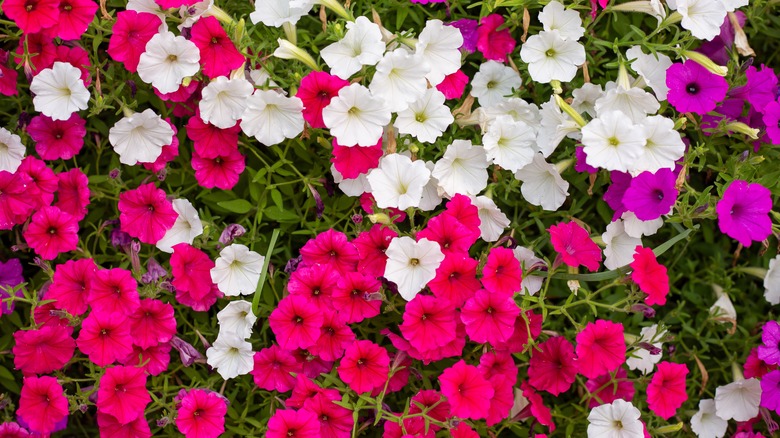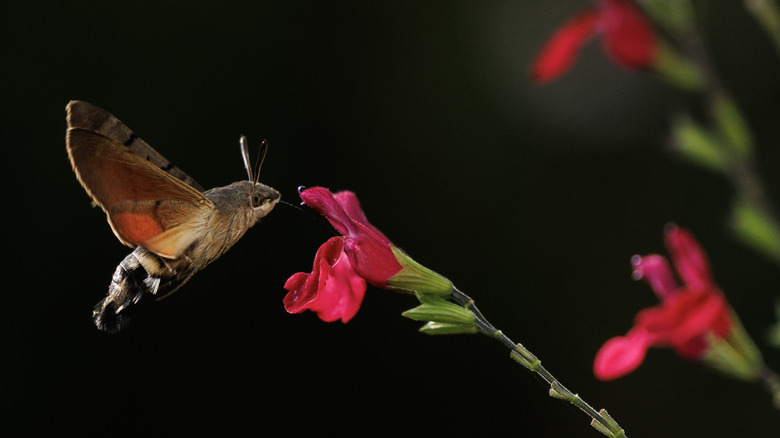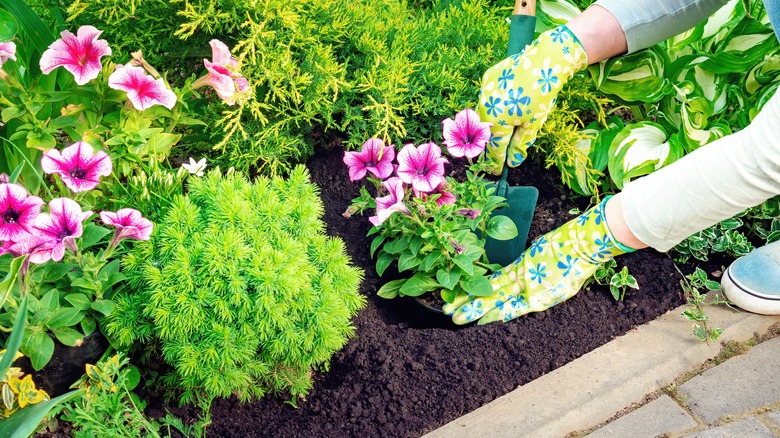The Colorful Plant That Will Thrive Alongside Petunias In The Garden
Planning your garden's layout is an exercise in plant know-how, as well as in color and harmony. Some plant pairings offer a flourishing and visually appealing space while also mutually benefitting each other. When planting petunias, salvia can be a great companion plant in your garden. This pairing stands out not only for its stunning color and visual display but also for their combination strengths, such as bringing in pollinators and offering natural pest and weed control.
The upright spikes of salvias, along with their vibrant blooms, offer a distinct contrast to the low-growing, cascading petunias. This stark difference in form creates a dynamic visual of heights and textures. The bright flowers of both plants provide a pop of color, and you can also pick opposite or complementary shades for each plant. Salvias come in red, purple, pink, and white, while petunias are available in every color of the rainbow, as well as bi- or tri-colored options. This bevy of colors can work to prevent your garden from becoming monotonous.
Petunias and salvias provide mutual benefits
Beyond their visual appeal, salvia and petunias offer a supportive partnership. In fact, the partnership between salvia and petunias is a testament to the benefits of companion planting since they each bring their own strengths to the gardens, which often complement each other. Salvias, with their aromatic foliage, act as natural pest deterrents, protecting both themselves and their petunia companions from unwanted pests. Petunias, in turn, act as ground covers, helping retain moisture and suppress weeds around the salvia's base, promoting healthy growth for both. Additionally, they both plants bring pollinators to your yard, which benefits not only both of these plants but all the plants in your yard.
Getting your salvia and petunia started in your garden is simple. Choose a sunny location with well-drained soil, dig holes according to individual plant sizes, and then pat them well in their new garden spots. Provide regular watering, especially during the initial weeks, and occasionally remove any dead flowers to keep them thriving throughout the season.
Caring for petunias and salvias
Both salvia and petunias require minimal care. Among the things you should know before planting petunias is that they are resistant plants and need basic care to bloom, including watering once a week and fertilizer once a month. Their colorful flowers may need a little sprucing up by mid to end of summer if they get leggy. Similarly, salvias don't require any extra care beyond being planted in well-draining soil and being left under a full sun. They don't require much fertilizer, are drought-resistant, and need basic watering. Amazingly, these hardy plants can grow up to 5 or 6 feet in one season and 1 to 4 feet wide.
One of the greatest strengths of this partnership is its extended blooming season. Both salvia and petunias grace the garden with their stunning flowers from spring all the way until frost. This provides a continuous display of color in your garden throughout the warmer months. It also prevents those dreaded periods of bare patches, keeping your garden vibrant and inviting.


